While most people don’t associate smells with stones, there are quite a few minerals that have a distinctive aroma. Not all of them are pleasant, as they tend to come from odd sources like sulfides and gas pockets, but they can help in identification in many cases.
So, let’s take a look at eight minerals that smell, and learn a bit more about them!
1. Sulfur-The Original Brimstone
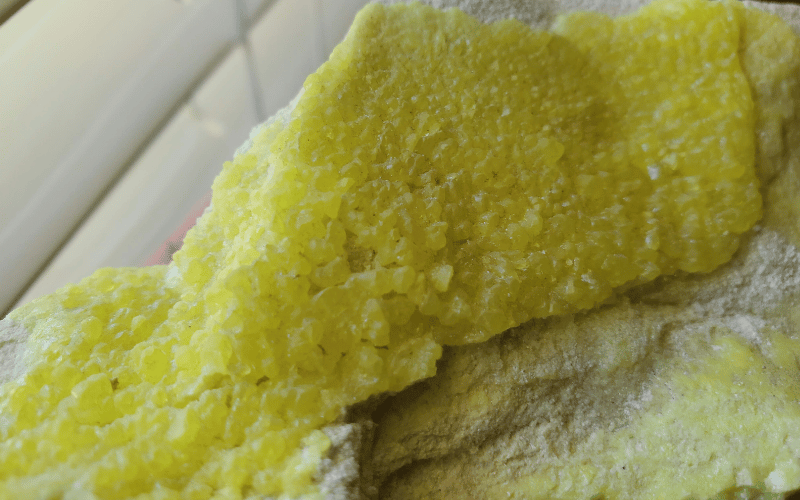
Sulfur is a yellow solid that accumulates around areas associated with hydrothermal activity. It’s generally found as a yellow crystal, and it’s smell is often associated with the underworld. Brimstone is actually the archaic name for sulfur, which was used in both daily life and had some more esoteric applications in things like alchemy.
Sulfur accumulates quickly, being released from hydrothermal vents that well up from far underground. While elemental sulfur does have a very faint scent, it smells incredibly strongly when it’s set alight. “Fire and brimstone” is more than a saying, it’s a reference to volcanic activity where it’s present in considerable quantities, and the burning of the mineral releases sulfur dioxide which causes the smell.
While most people associate sulfur with a powdery yellow form, slower formed crystals can have a distinct orthorhombic pattern. The majority ends up being used to make sulfuric acid these days, which is useful in a number of industrial and cleaning processes. It’s readily available, just be careful where you pick up samples if you desire a good crystal of it since most of those seen currently are lab-created.
2. Kaolinite-An Earthy, Clay Smell
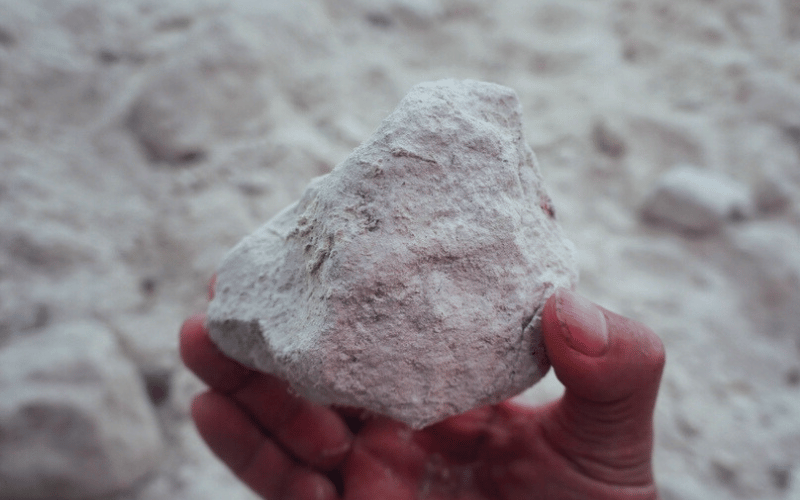
Kaolinite is a clay mineral that’s found in many places across the world. The structure itself is fairly simple: at the molecular level its comprised of silica (SiO₂) bonded to alumina (AlO₆) by oxygen atoms in alternating sheets. It’s important commercially, especially since it’s the main source of clay in many ceramics.
Kaolinite itself is a relatively simple sedimentary mineral. While the pure form is white, iron has a way of seeping in over time. The oxides produced will color it various shades from yellow to dirty red depending on the concentration. Kaolinite is also known for bearing a simple, earthy smell that most people associate with clay.
Kaolinite is included in many clays intended for ceramic use, particularly with whiteware. It’s also used as an abrasive to help clean up paper, and can actually account for up to 25% of a piece of paper’s weight. This common mineral has a lot of uses, and is fairly common across the planet. But to many people the scent of kaolinite is exactly what they’re smelling when they work with naturally produced clay.
3. Antozonite- A Whiff of Ozone and Fluorine
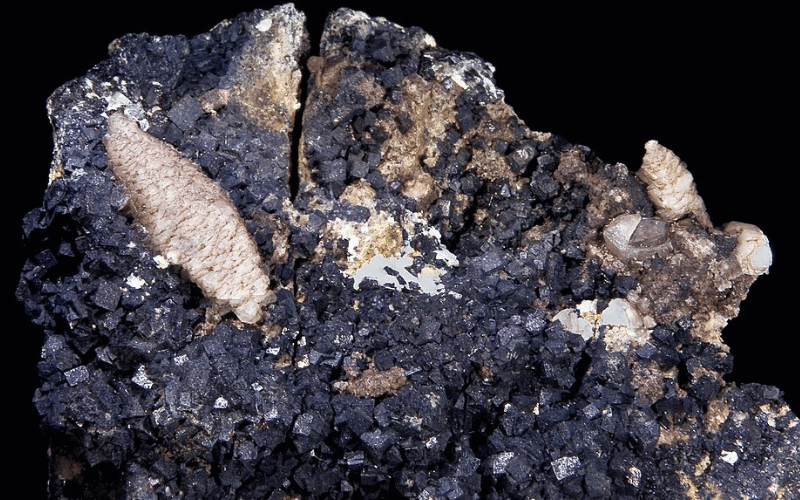
Antozonite is a fluorite variety with a few key differences. The first is that it has uranium included in it’s structure, constantly releasing low levels of radiation within the stone itself. Antozonite is known to form lots of little voids and inclusions, and has a distinct smell similar to ozone.
The process behind this smell is fascinating. It appears that beta radiation released from the uranium causes some of the fluorite (CaF₂) to break down over time, releasing fluorine gas. While fluorine is incredibly dangerous, the levels of concentration here aren’t generally enough to harm a human. It’s only released when the crystals are crushed or ground.
My personal favorite part of this mineral is the myriad of names it’s been given, all referencing the scent. It’s called stinkspar, stinkstein, stinkfluss, and stinkspat in various locations. My personal favorite synonym for antonzonite is “fetid fluorite” which is just an incredible thing to call a stone. If you happen upon a sample take care when handling it and don’t crush or grind it without protection, but it doesn’t require much more precautions than other minorly toxic minerals like galena.
4. Jet-A Coal Smell

There are quite a few coal minerals out there, from anthracite to bituminous coal, but jet is probably the most collected. This mature form of coal is often used as a gemstone, owing to it’s hardness(up to 4.0 on the Moh’s scale) and easy workability. Jet doesn’t possess a strong smell all of the time, but it does have a tinge of the distinct smell of burning coal.
Jet is flammable, like all coal varieties. It’s found across the world in various formations, many of which originate in Europe. It has a long history of use for decorative purposes, being used by both early Europeans and the indigenous American tribes for jewelry and decorative objects. It saw a resurgence as a gemstone in the Victorian era, being used as a black gemstone for mourning jewelry.
Jet has been imitated many times, especially when popular. Black glass, sometimes called French jet, is one substitute and another is “ebonite” which is a hard form of rubber. While it doesn’t have the pedigree of some gemstones, jet certainly has an attraction all it’s own with a deep, opaque black. After all, the mineral’s name itself is sometimes used to describe a deep, unblemished black.
5. Pyrite- Another Sulfur Smell
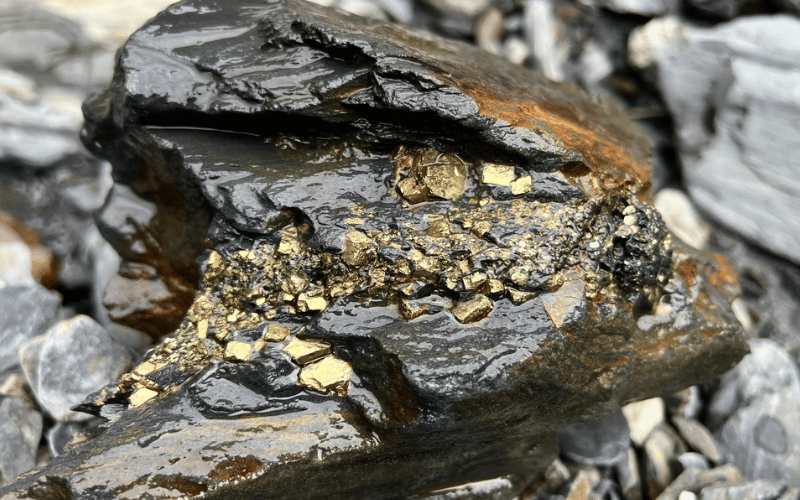
Fool’s gold, or iron pyrite (FeS₂) is a commonly found mineral. While most people know the brassy stone for it’s superficial resemblance to gold, it’s another sulfide mineral that has a distinct smell. Specifically, when crushed you’ll find that it releases the smell of sulfur into the air.
Pyrite forms into distinctive cubic crystals and can be found across the world. It also tends to occur in areas where there is also gold which has long made it the bane of unwary prospectors. While visual determination can give some hints, the real key to differentiating them is how the mineral responds to scratching. Gold will dent due to it’s ductility, rather than simply scratching like pyrite.
Of course, we still don’t know how much gold was discarded when miners ignored large pieces of iron pyrite. It turns out that iron pyrite often contains gold in microscopic particles trapped in the crystal formation, and can be richer than more sought after forms of gold ore. While it would require industrial processing to be worthwhile, it remains a hopeful contender for the future of the gold mining industry.
6. Amber
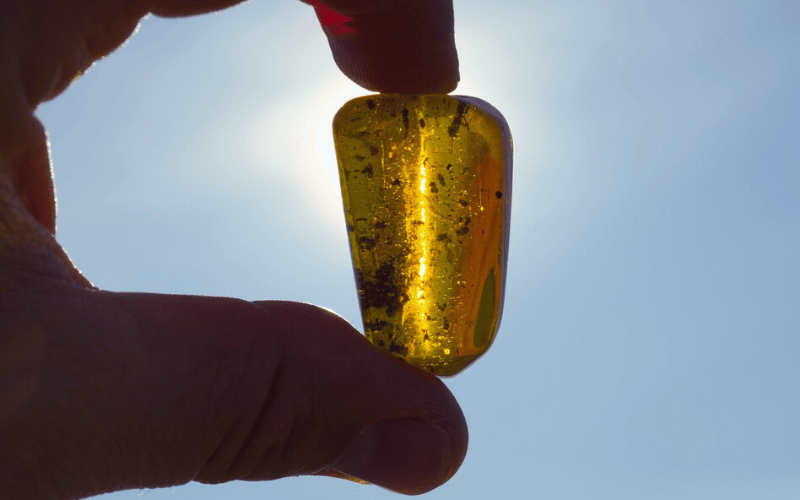
Amber is a polymerized tree resin, generally from ancient coniferous trees, and has long been used for both decorative purposes and even as an incense. Real amber will smell faintly of pine or spruce, and when heated the smell is very strong.
Amber is mainly known, these days, as the formative ingredient in Jurassic Park, where John Hammond collected samples of bloodsucking insects from across the world and extracted DNA to clone dinosaurs. While this hasn’t happened in the real world, amber is also known for its extensive inclusions of plant matter and insects.
Much of the amber in the world is found along shorelines. In particular, Baltic amber washes up on shore since the material is less dense than saltwater. It’s an odd stone, feeling like plastic in the hands(because it is!) and often faked because of its high value. Still, a fascinated collector can easily find polished pieces with included insects at a relatively low price, although inclusions like vertebrates or large insects can quickly raise the price of a small chunk to five figures.
7. Sphalerite- Another Sulfurous Scent
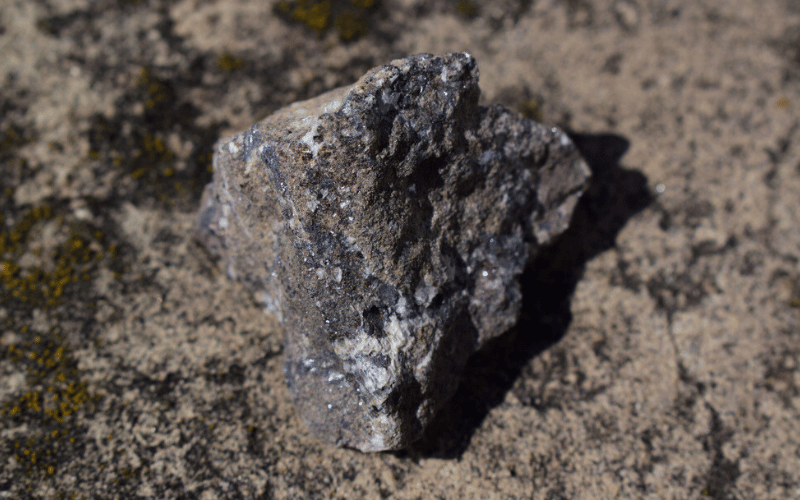
Sphalerite is the most important ore of zinc. Zinc is used for everything from galvanized steel to anodes used in batteries. It’s generally found as a black or reddish crystal, and is known for the dramatic forms it takes when the crystals are euhedral among collectors. Gem-grade sphalerite exists and is sometimes faceted for the gem collector market, although it’s not a good stone for jewelry.
Sphalerite is another sulfide mineral, with a formula of (ZnFe)S. Like most other minerals in this category, it has a faint sulfur smell that’s increased when the stone is crushed. This brimstone smell is a common tell among sulfides, and makes them one of the few mineral categories recognizable with your nose.
Sphalerite is still the primary ore of zinc, but samples of the mineral are fairly easy to find. The well-formed crystals and their distinctive habit make it a favorite among collectors, and some high-grade ore is clearly diverted to the collector market.
8. Kratochvílite- A Distinct Petrochemical Smell
Kratochvílite is a strange, organic mineral found in the Czech Republic. It has a complex, organic structure and releases the distinct smell of hydrocarbons, generally likened to the naphthalene used to create moth balls. It appears to be volatile over time, with reports noting that samples exposed to air can degrade over a few years or decades.
The mineral itself is generally found as small gray or white clusters of crystals. It’s actually a byproduct of combustion, strangely enough. When a pyrite-rich or oil-rich shales burns, Kratochvílite can remain behind. It’s uncertain whether or not it’s entirely separate from fluorene (not to be confused with fluorine) or anthracene at present, both of which are combustion byproducts from petrochemicals.
It’s quite rare, since it requires combustion to be produced. This rarity hasn’t generated much interest, since the volatile crystals degrade over time and give off a distinctive, generally unpleasant odor of petrochemicals. But it’s definitely a rock that smells, so it was made for this list!
- Online rock and mineral club for collectors of all levels!
- Find community with like-minded rock and mineral enthusiasts.
- Monthly Giveaways!
- Free Access to Entire Digital Library of Products (annual memberships)


